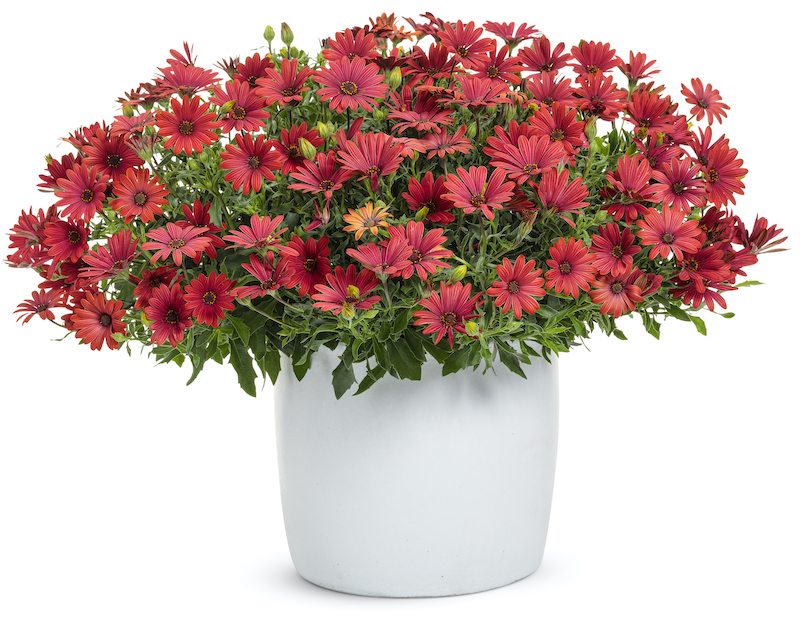African Daisy is mainly grown as an annual plant that flowers all summer through the first frost in the fall. After this plant dies back in the fall, it is usually composted or discarded. Pruning for annuals involves pinching back to encourage bushier growth and flowers for a longer blooming season. In USDA hardiness zones 9-11, African Daisy grows as a tender perennial. In those climates, the plants will be semi-evergreen, continuing to stay green and bloom sporadically as long as the temperature stays above 50 degrees F.

When to Prune African Daisy
The pruning of African Daisies starts early in the growing season while the first leaves and stems are still small. Pinching out the top growth and first flower buds will encourage branching further down the stem. The result will be a much more compact plant with many more blooms and sturdier stems. Pinching is done early in the summer to tidy the plants after the first flush of flowers has faded. Cut African Daisies back by half to rejuvenate the plant and encourage another round of blooms in 4-5 weeks.
Deadheading is a technique that extends the blooming period. Regularly cutting out the spent flowers will keep the plant from setting seed early in the summer. Continue to deadhead African Daisies all summer. Gardeners that are growing African Daisy as a perennial will notice that the plants slow down growth as the weather gets hot in mid-summer.
Continuing to water and fertilize the plants will encourage blooming to resume when the weather cools late in the summer. Continue deadheading spent flowers through the fall. In the early spring, new growth will begin. This is the time to give the African Daisy a hard cut-back to the basal growth to encourage a bushy form.

Why Prune African Daisy
Pruning, deadheading, and pinching of African Daisy keep the plant compact and blooming throughout the primary growing season. African Daisies grown as perennials in warmer climates can become woody and leggy if they are not regularly deadheaded. This tender perennial is also not very long-lived compared to more hardy perennials.
Taking cuttings from softwood growth can provide replacement plants for when the main plant dies. At the height of summer, cut nonflowering stems to 6 inches. Remove half of the foliage and place the cutting in a pot of seed-starting mix or perlite. Keep the pot watered well until new foliage growth appears. This will let you know the cutting has rooted and can be potted on.
How to Prune African Daisy
Step 1 - Pinch back the first flush of flowers down to a set of leaves.
Pinching out the first flower buds that form will signal the plant to produce more buds. The pinching will also promote denser foliage growth.
Step 2 - Deadhead spent flowers regularly.
Deadheading will encourage more flower production, just as pinching does. Cut the flower stem back to the base of the plant. This helps to keep the shape tidy and hide any bare stems.
Step 3 - Cut back the old growth hard as the new growth emerges in the spring.
African Daisy is a perennial in the warmest hardiness zones of 9-11. The old growth does not completely die back over winter and must be removed in early spring. Cutting the plant back helps it keep a rounded, compact shape.
African Daisy Pruning Tips
- Pinch out the first blooms to encourage lateral branching
- Deadhead regularly to keep the plant from putting energy into setting seed
- African Daisies grown both as annuals and perennials need the same types of pruning
 |
Author Robbin Small - Published 7-24-2022 |
